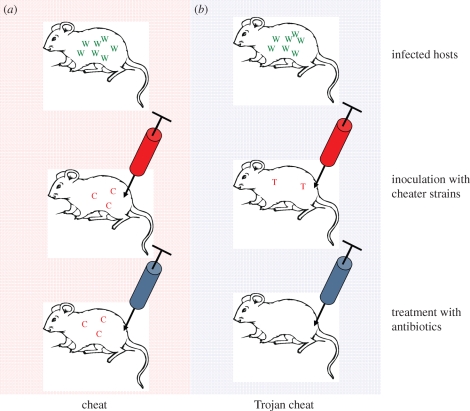Figure 3.
Introducing antibiotic resistance with a Trojan horse approach. (a) This panel shows a host infected with wild-type strains (W in green) inoculated with a strain of cheats (C in red) that are able to invade and outcompete the wild-type infection. The resulting population of bacteria is less virulent, less productive and more vulnerable to eradication by the host's immune system. However, this cheat strain (C) is still resistant to antibiotics. (b) This panel represents a host inoculated with a cheater strain (T in red) that has also been genetically engineered to have antibiotic sensitivity restored, allowing the infection to be eradicated by antibiotic treatment. We have called this kind of strain a Trojan horse cheat: host = Troy; cheat = wooden horse; antibiotic sensitive gene = Greeks. This representation shows the best possible outcome: in all likelihood, the cheats will not completely eradicate the wild-type cells and so, following antibiotic treatment, the resistant population could recover. Even if resistant strains survive, the infective population may be reduced to levels that can be eradicated by immune system of the host and there is theoretically no limit to the number of times antibiotic-sensitive strains could be inoculated.

